Living In Ottawa Without A Car
You know what will never happen to you driving around Ottawa? Getting yourself licked by a cow, in the middle of the experimental farm. It’s not something anyone has on their list of experiences when jumping into a car-free life. But it happened to me a weekend ago.
This past week we blew past 2,000 kms ridden on our Riese & Muller Load4 75. This bike arrived on my birthday last year. August 30, 2023. Best birthday present ever. To say the least, this bike changed our lives. We had already been living with an electric long-tail cargo bike from a company called Yuba. The Kombi E5 had made hauling the four year old around a lot easier. But my wife Lyn did not like it. It’s jittery. You can feel every pothole and bullshit curb-cut the city doesn’t care to slope. The long-tail design means that the kid sits behind the rider. After years with a non-electric cargo bike where Ren rode up front, it was not enjoyable for her.
Look, I get it. At 6 ft tall, 250 lbs, I don’t give a shit about much. And if you’re going to try and live in an urban area without a car, well you might as well enjoy it. It might as well be comfortable. And the Load4 75 is comfortable. It’s a car replacement electric vehicle. Yes, it has two wheels. Yes they are not considered EVs by the government. They like handing out rebates for folks willing to shell out $50,000 but I digress.
We sold our little Mazda 3 hatchback in May, 2020. We loved our little car. And yet it’s one of the few decisions I’ve ever made in my life that I have not regretted for a second. Don’t get me wrong. I’m not on any high horse about doing this for the environment or some high ideals. It was a decision about how we want to live our lives. It was about letting go of the financial burden that car ownership, even in 2020, had over us. I did the calculations then, pre-inflation and the pandemic. Our annual costs were roughly $12,000. I can’t imagine what it would cost to own a car in 2024. And hope to never have to know again.
As time has gone on, two things are clear to me in tandem with each other. First is that belt drive electric cargo bikes are capable of handling “most” of a Canadian winter. E-bikes aside, two cities with the fastest growth in active transportation networks have been Montreal and Edmonton. Both locales are not known for easy winters. The key to living in cities that experience winter is infrastructure that’s maintained. Having bikes that are easy to keep clean from salt is just an added benefit. The second thing is that there needs to be a concerted effort to move towards “living without a car.” This isn’t about a two-wheeled version of transportation over a four-wheeled version. It’s not about the “avid cyclists” and infamous bike lobby that municipal governments the country over rail against. It’s about the ability for most people who live in urban areas to be able to live, AND, have a decent quality of life without the need to own a personal vehicle. This maybe quasi-possible in parts of Ottawa in 2024 but not on a scale that it needs to be.
Did you know? If you’re thinking through the process of going car-lite or car-free, you can get CAA coverage for bicycle and e-bike breakdowns? Flat tire and 5 kms from home? CAA will give you four (to five depending on membership) trips home or to your local bike shop. I’ve had CAA membership for years. All of our e-bikes are covered by CAA insurance for theft and fire under our home insurance policy waiver. And I’ve also walked our Yuba e-bike home from about two kms away. Do NOT recommend. I know this feels like an ad but it’s not. It’s just another important piece of the knowledge pie for your consideration.
This year will be one of the first in a few that I have biked all 12 months of the year. Back when our now-five-year-old was small, I hauled him around with my fat bike and a Thule Chariot. But he grew. I was tired of sweating so much all year round. And we moved to live in what could be considered a 15-minute neighborhood. Granted the downside was that we dwell right beside the shit-strip known as Carling Ave. I can see Ikea one kilometer away but getting there requires riding a sidewalk or walking down Pinecrest Avenue. Both modes are utter hell, so we never go. Same can be said for the nation’s largest Canadian Tire. It’s only two fucking kilometers away but those are two, straight kilometers down Carling Ave. I rode Carling there last year, a few weeks after we moved. Early on a Sunday morning was still way too much of an adrenaline rush to ever warrant doing it again. I’m can be as insane as the next person but I do not wish to die. Least among the options is death by the hands of someone driving - with one hand on the wheel and the other scrolling some bullshit app on their phone.

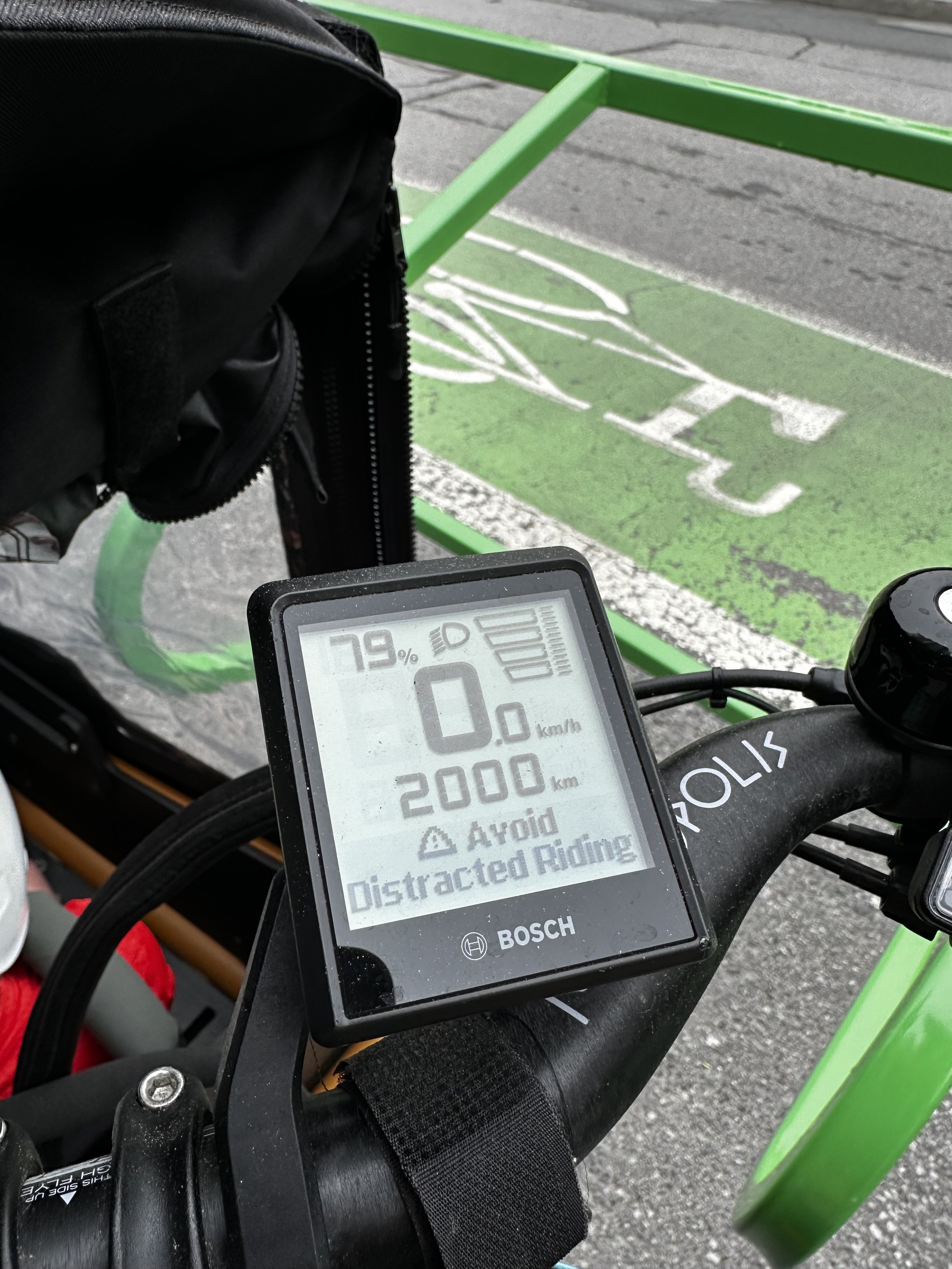


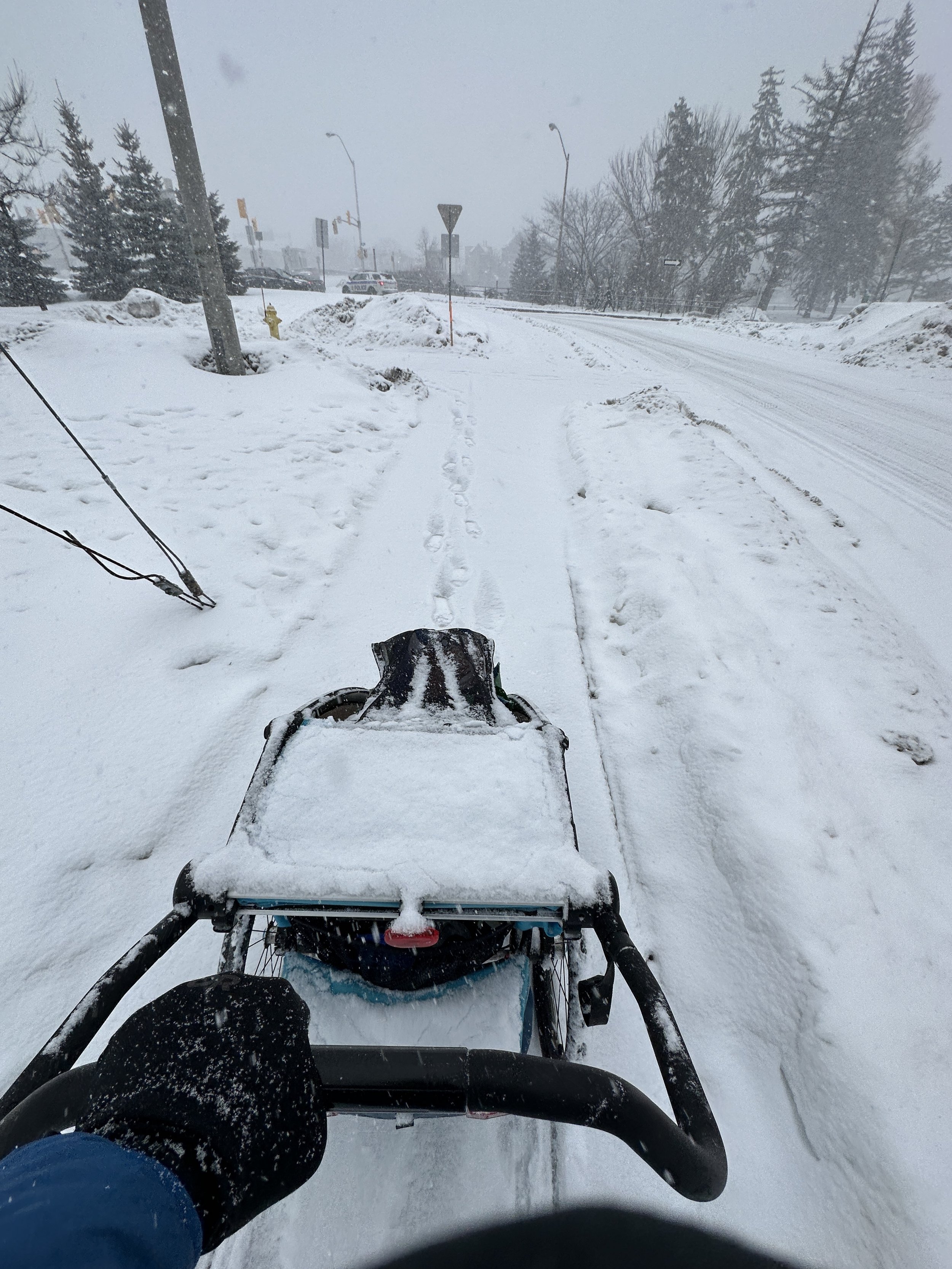

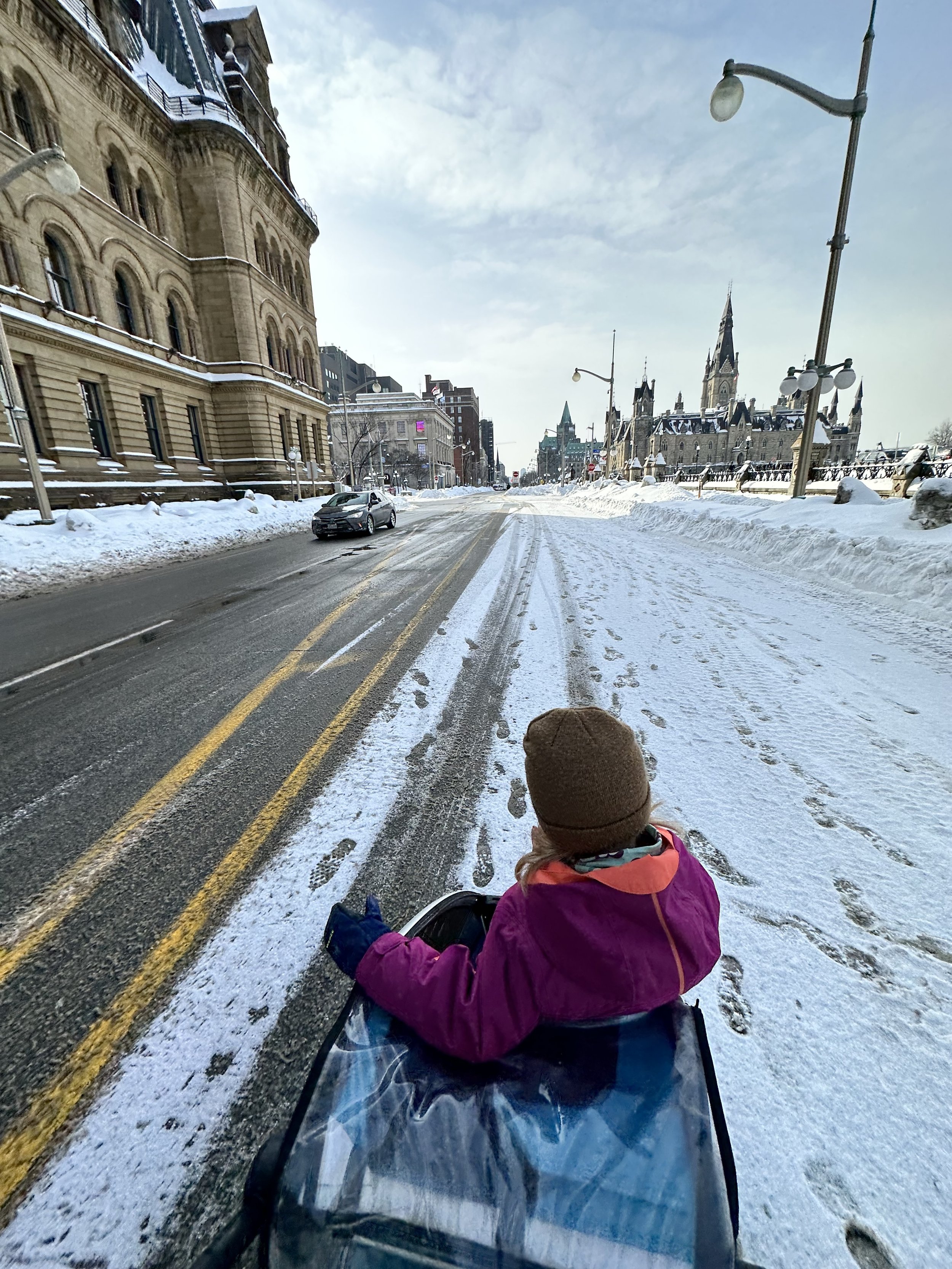
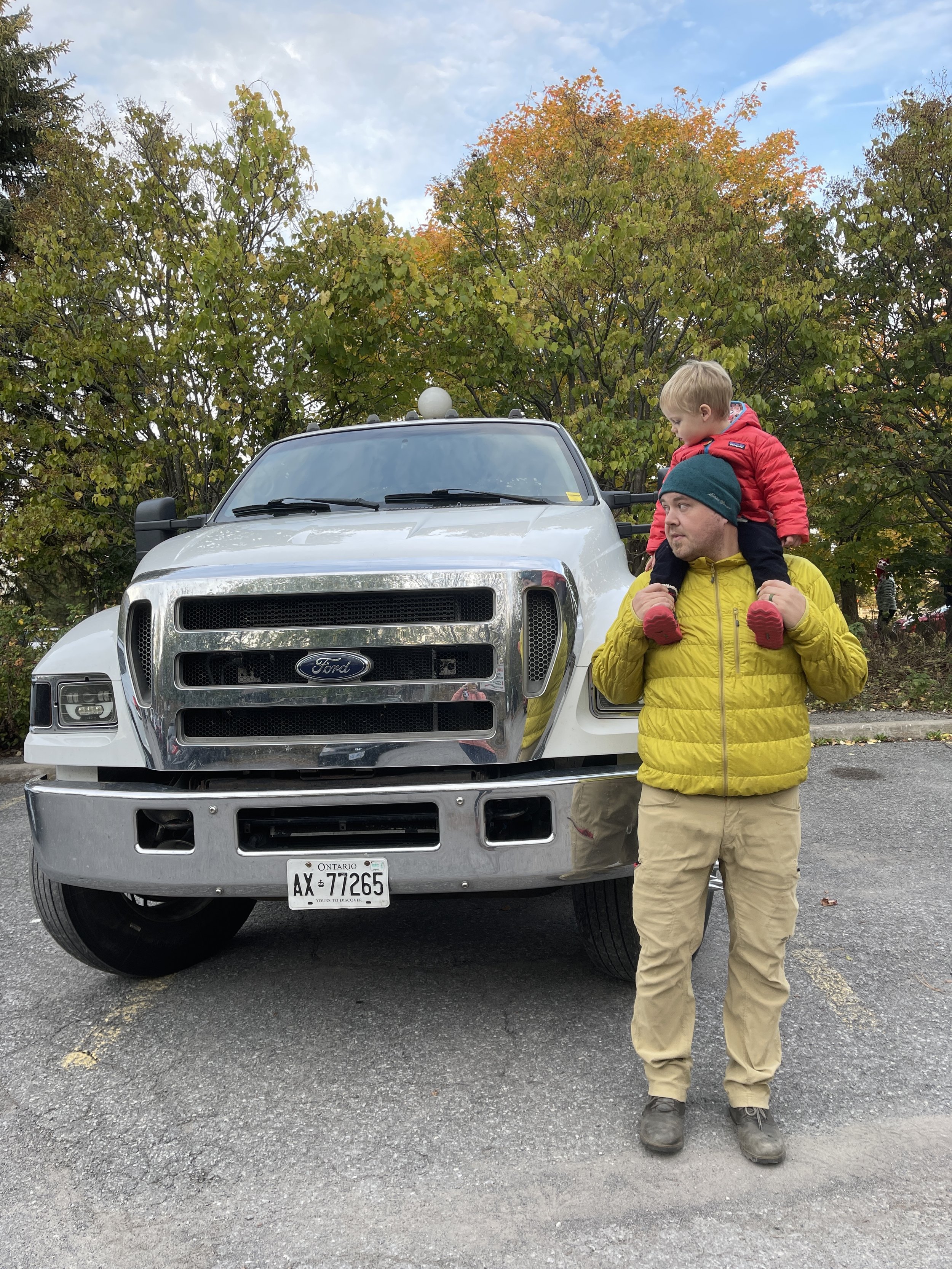
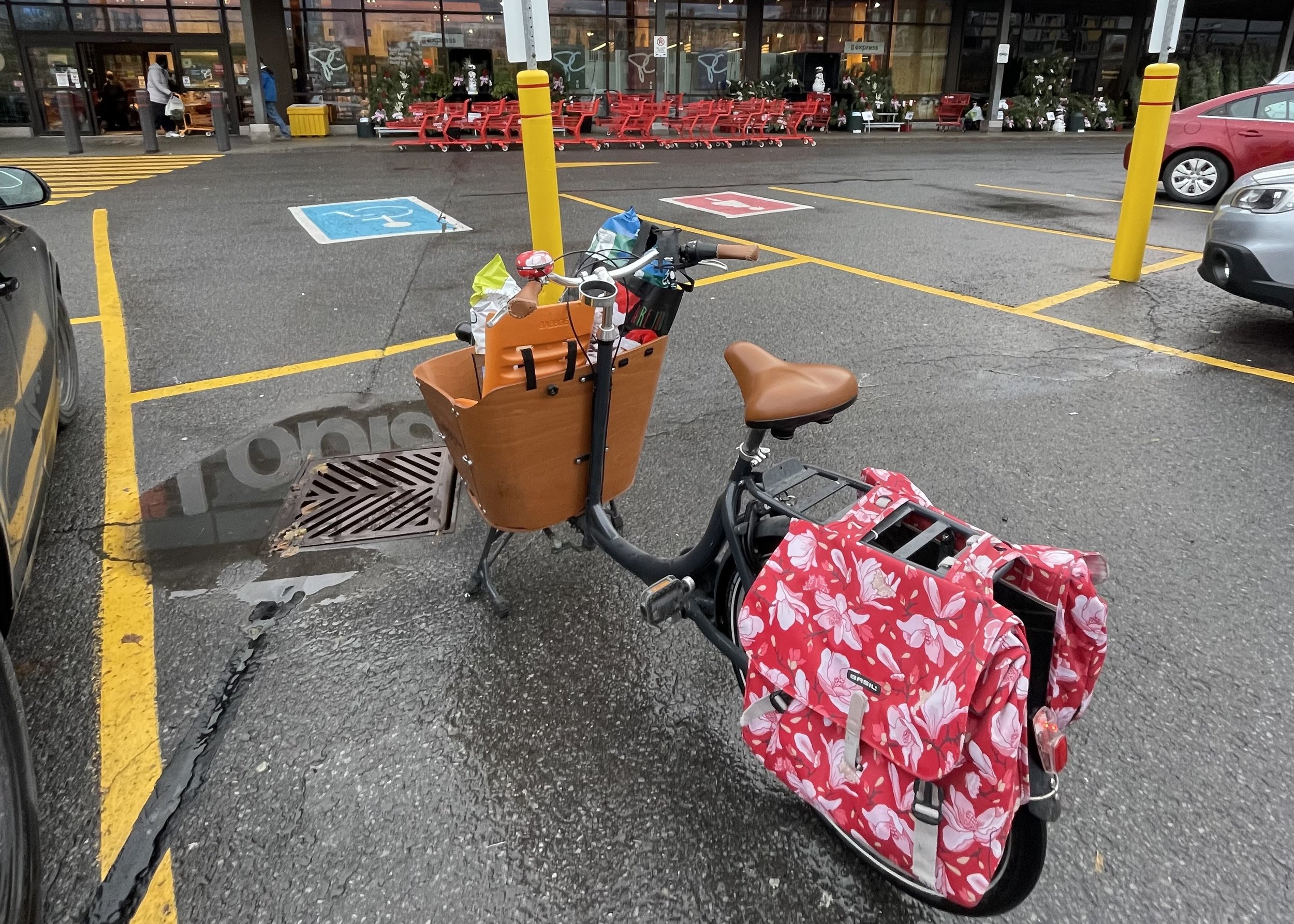

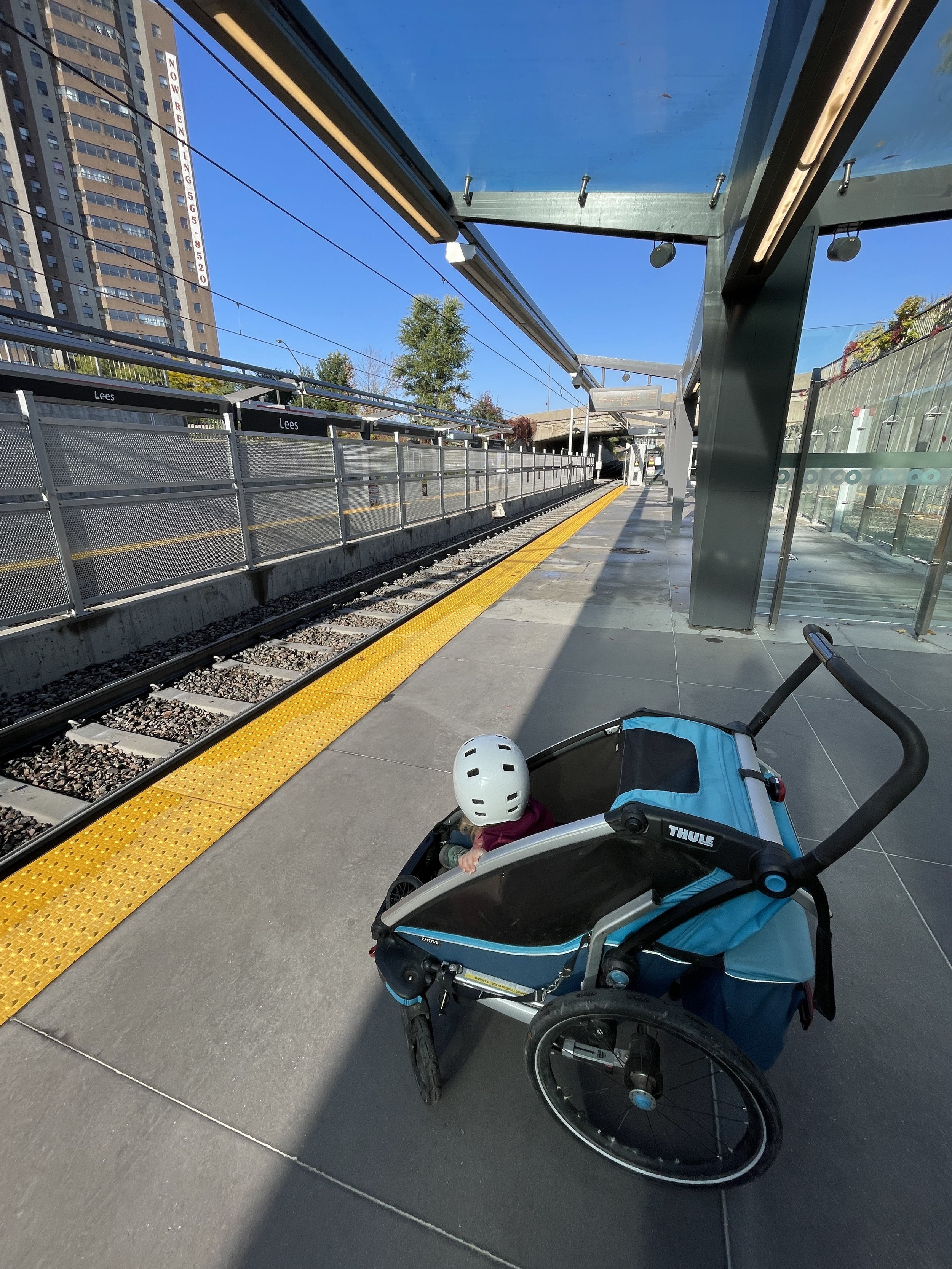
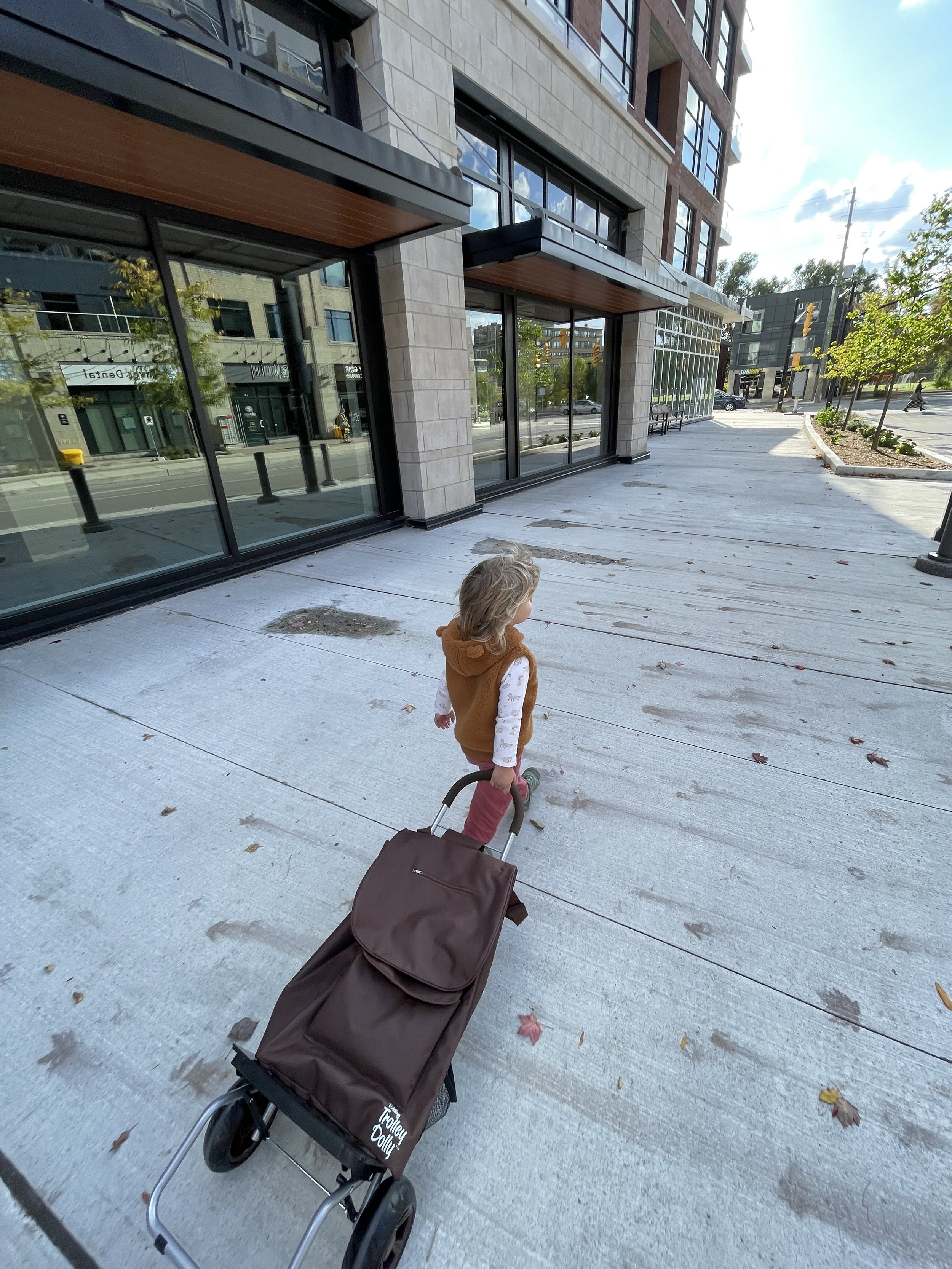

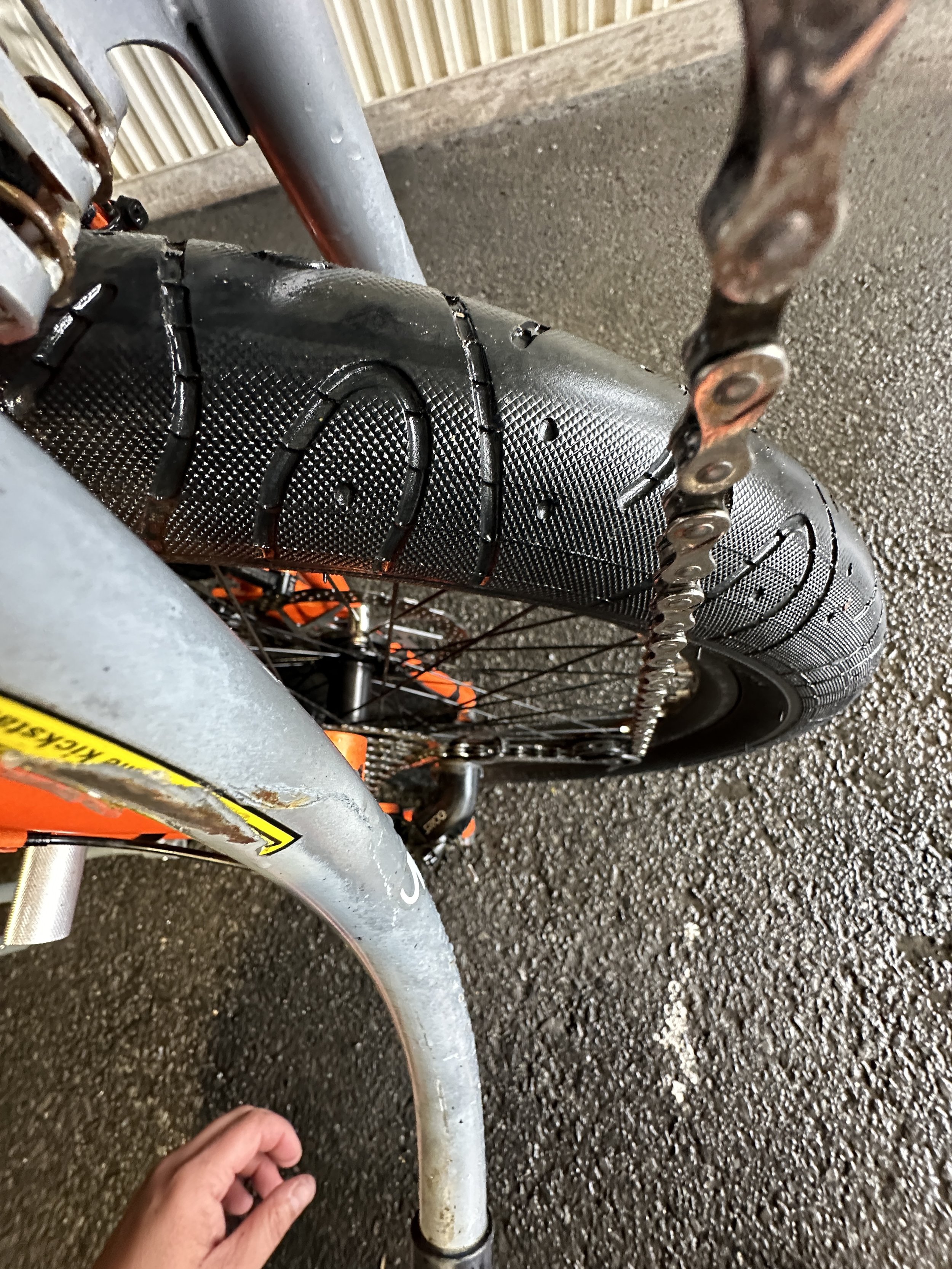
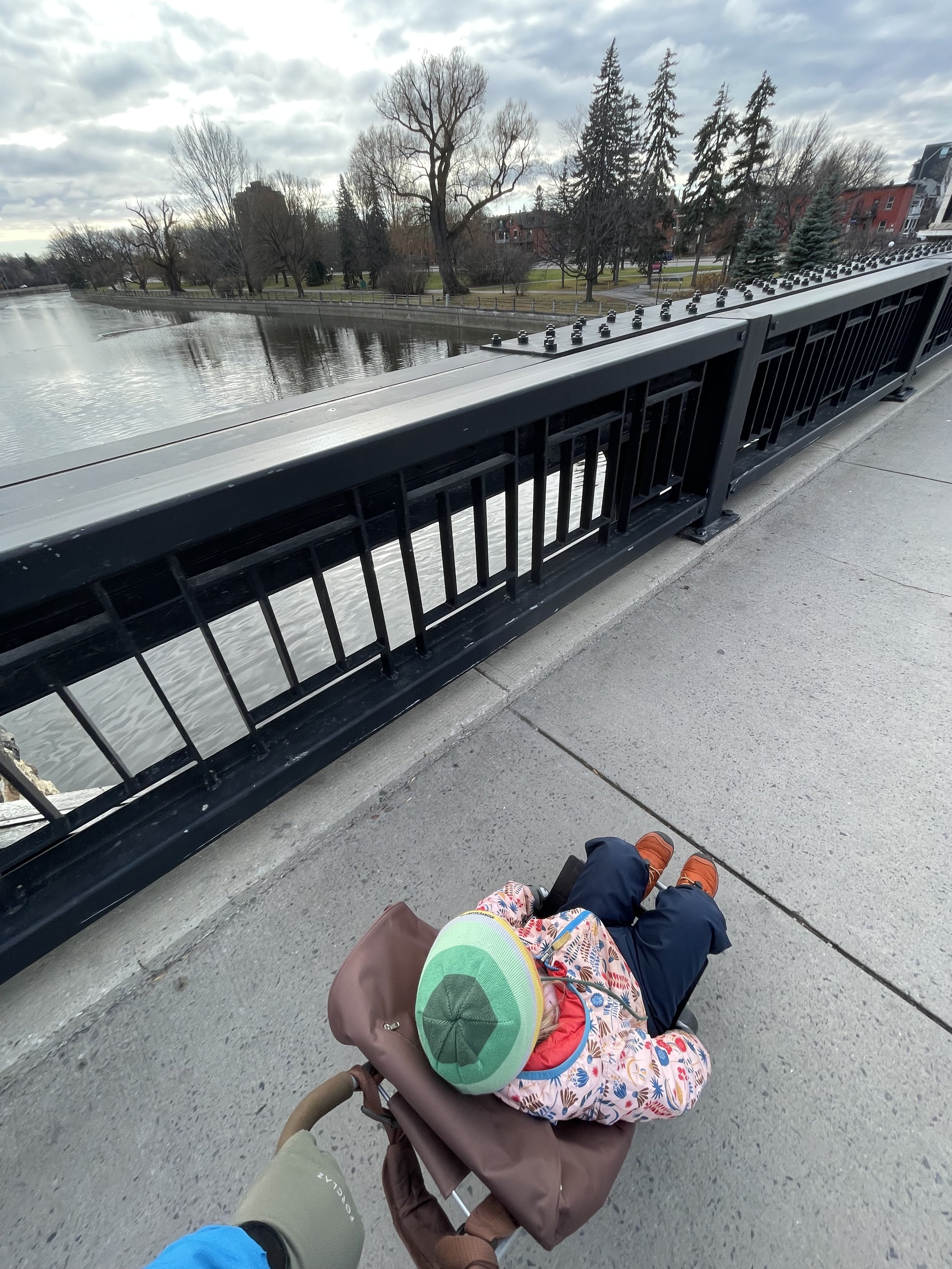
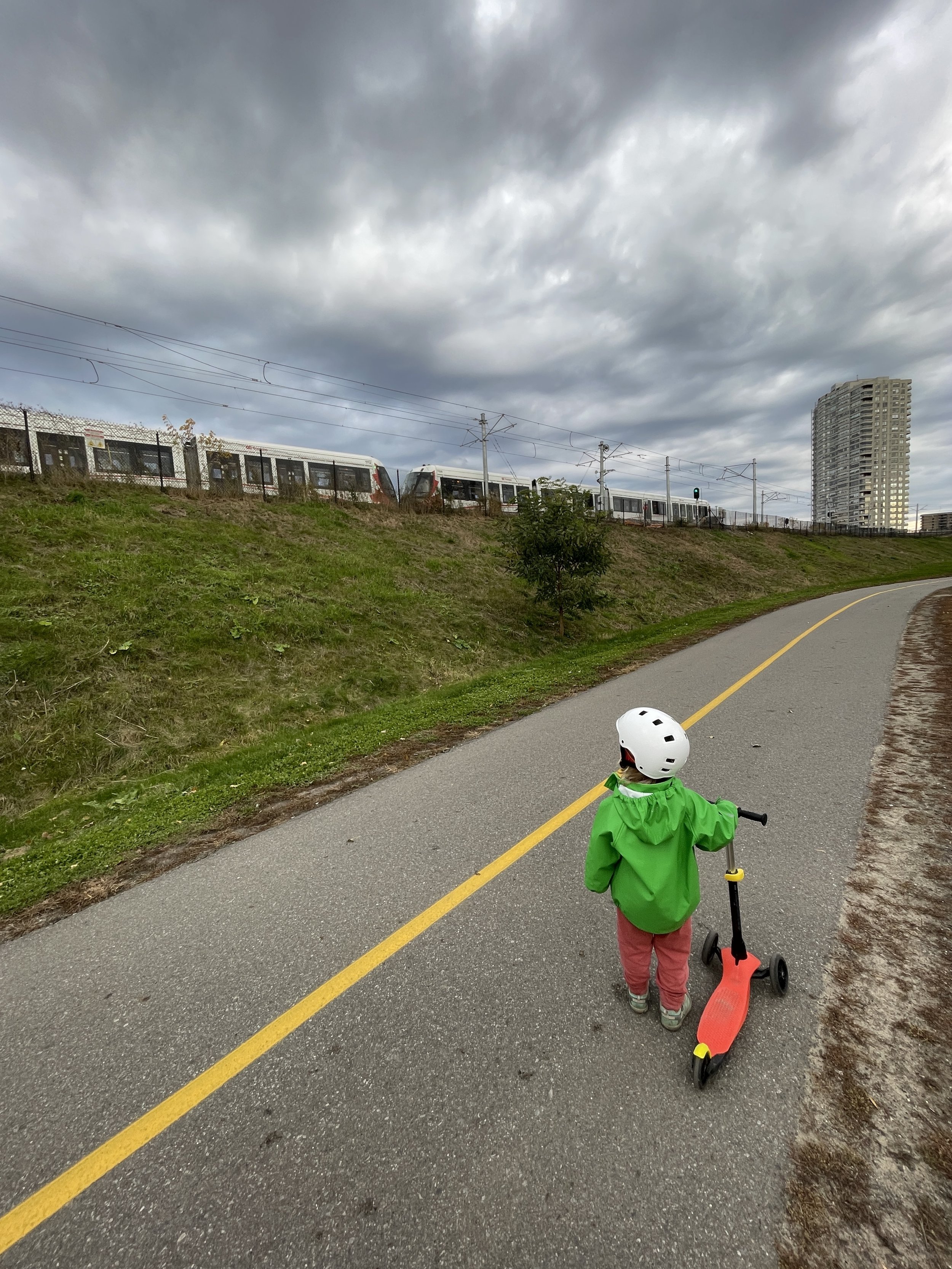
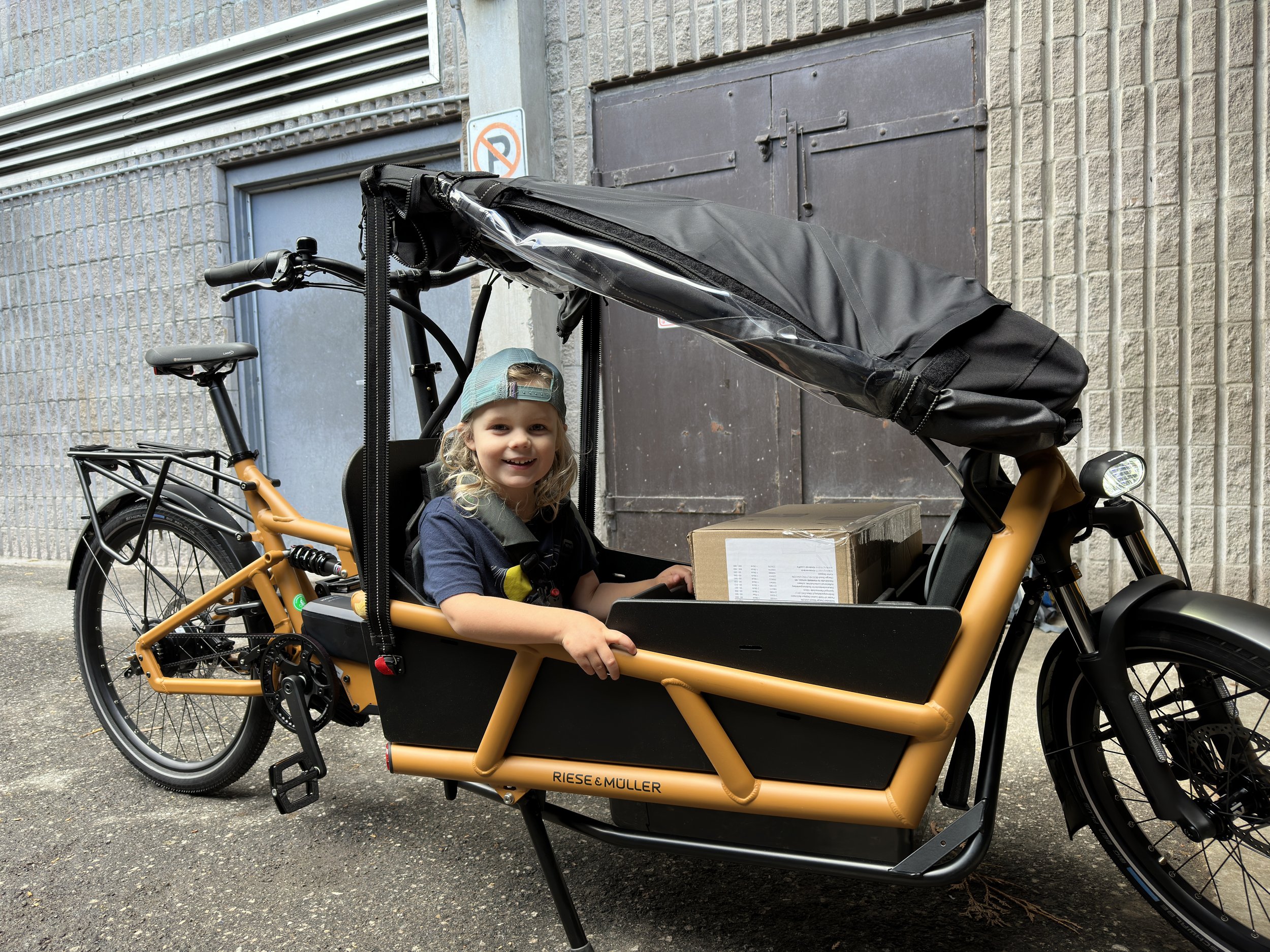
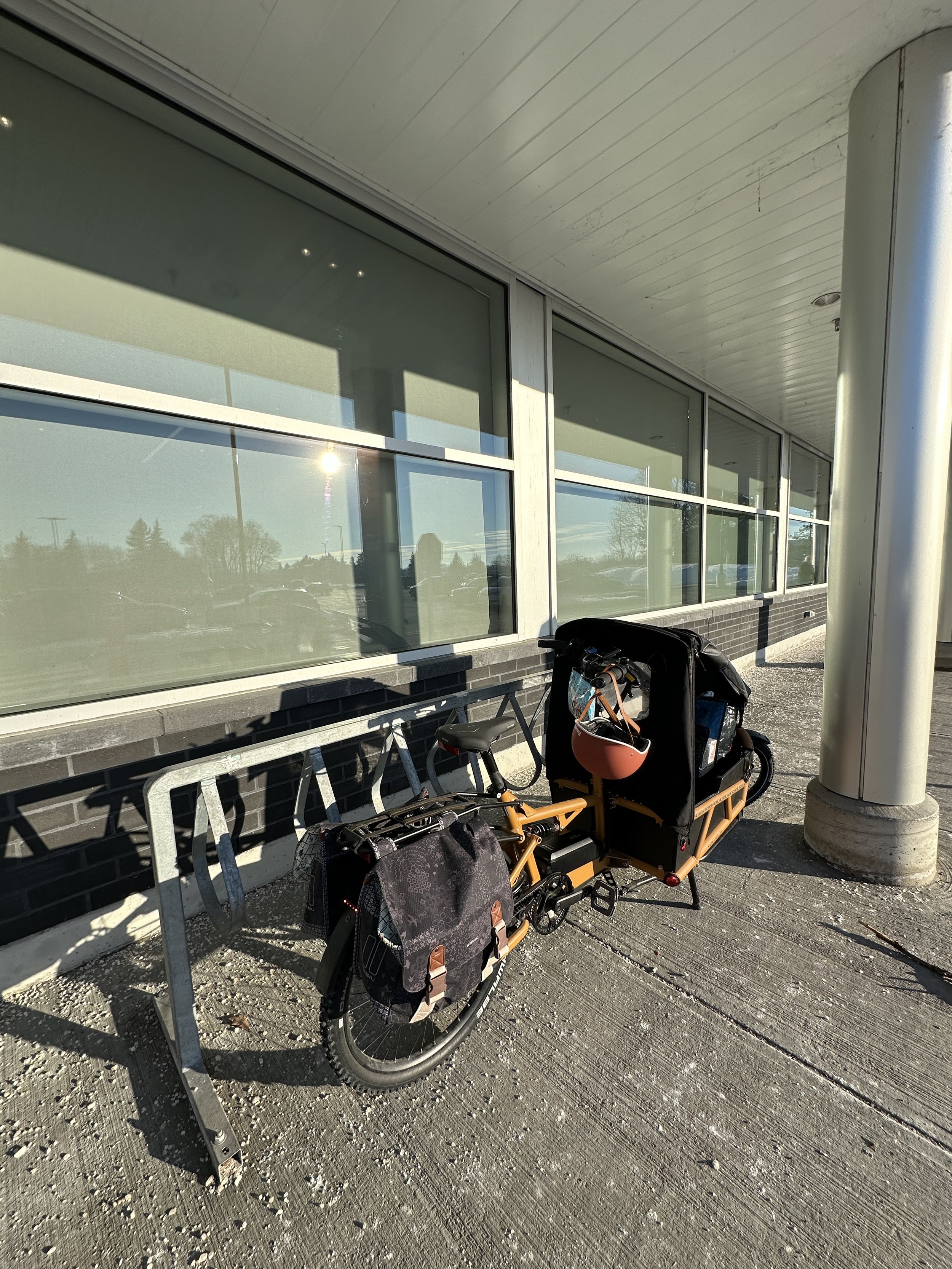
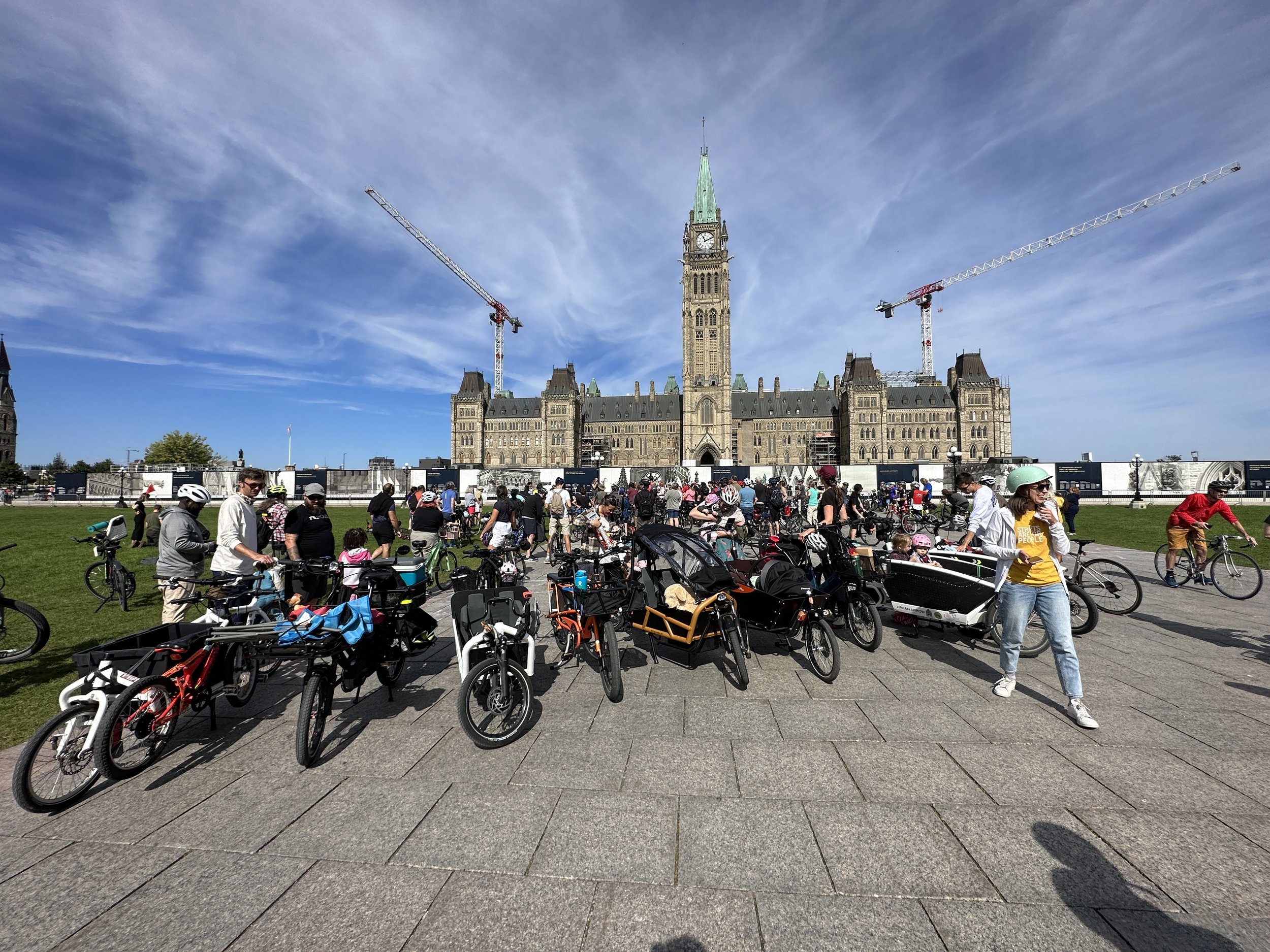
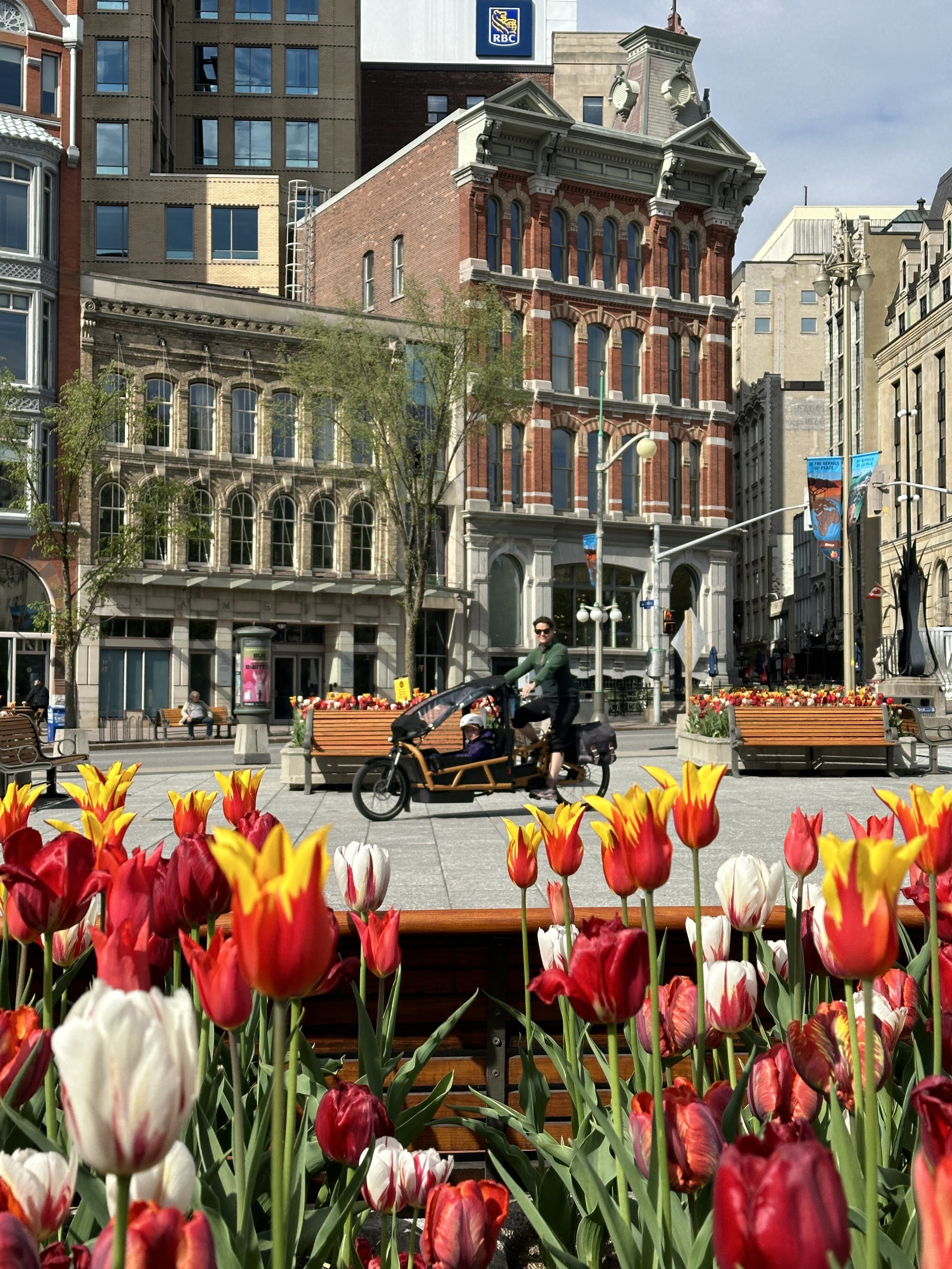
I think his is the part of a bullshit sandwich where I tell you all the things to make you feel good and even contemplate living car free in a city like Ottawa right? I am aware of the challenges as much as anyone else. No, I’m not disabled but I’ve lived with chronic health issues for almost a decade. I can no longer drive on highways. There was a period in the past few years where I couldn’t walk or bike over tall bridges. Bodies are weird and answers are few. And that is why I’ve become more and more convinced that advocacy groups, and politicians at all levels need to focus on improving the ability of Canadians to live without a car. It serves people who walk to live. Those who bike, or one-wheel, or scooter, or use any mobility device or aid. Or those who scooter to a bus stop or LRT station and then use said device on the other end of their public transportation destination.
But what is it “actually” like? It’s hard. The convenience factor of having a car is very very sticky. Rain? Meh, drive. Snow? Drive. -30? DRIVE. And I want to say that though this is real. It’s an initial mental hurdle at the start of an acclimation. Warm clothes, layers, spiked bike tires, winter boot cleats, umbrellas, collapsible wagons and any other number of elements go into said acclimation. I’ve gone grocery shopping in -30 with a two-kilometer round trip with my biggest issue being the sweat. I dropped off the kid on our Riese & Muller in the middle of January with him having no hat, gloves and his jacket unzipped. With any scenario you can think of there are solutions. But are any “as convenient” as driving a car? Nope. Are some of the biggest issues related to living without a car the lack of maintained infrastructure? Fuck yes. Specific to electric bikes, yes there is a reduction in the battery life when it’s cold. But the reason I don’t bike as much in the winter as I do now is because it’s often not possible. It’s not possible because when you take the lane, as the sides of the roads are shit, people don’t really give a shit that you even exist. And this is the other part of the infrastructure piece. People who drive. They all use their phones, 365 days a year. They use their phones while driving and while stopped at intersections. And so yes, infrastructure is important because the physical barrier is important.
I’m not breaking news by saying that the biggest growth market for electric bikes are households with more than one personal vehicle. This isn’t about cars or no cars; bike lanes or no bike lanes. Is there going to be a time soon where it’s “convenient” to live in Ottawa without a car? Probably not. There’s going to have to be an embrace of what life can be like for your individual or household situation. We did. And it’s possible. You can and will adapt. Each ward in Ottawa can take it on themselves to help as many households get rid of as many cars as possible. Because this is what I live and hope for. This is what I believe Ottawa should strive for: “as much as possible.”
There are no heated seats, steering wheels and thousands of kilometers dedicated to you getting around how you want. There’s lots of time in the rain and snow waiting with kids for a bus that was supposed to show up 10 minutes ago. It took one time last year in January for a bus at the closest stop by the Science and Technology Museum for 40 goddamn minutes with a freezing cold three year old for me to never leave without a dedicated backpack. I was spitting mad but buying a $40,000 car to fix this was not a solution for us. Living without a car has been the best thing we’ve ever done. We’ve met so many people, had so many conversations, and gotten to know our neighborhood. The more people seeing each other outside of windshields, the better we are all going to be.
